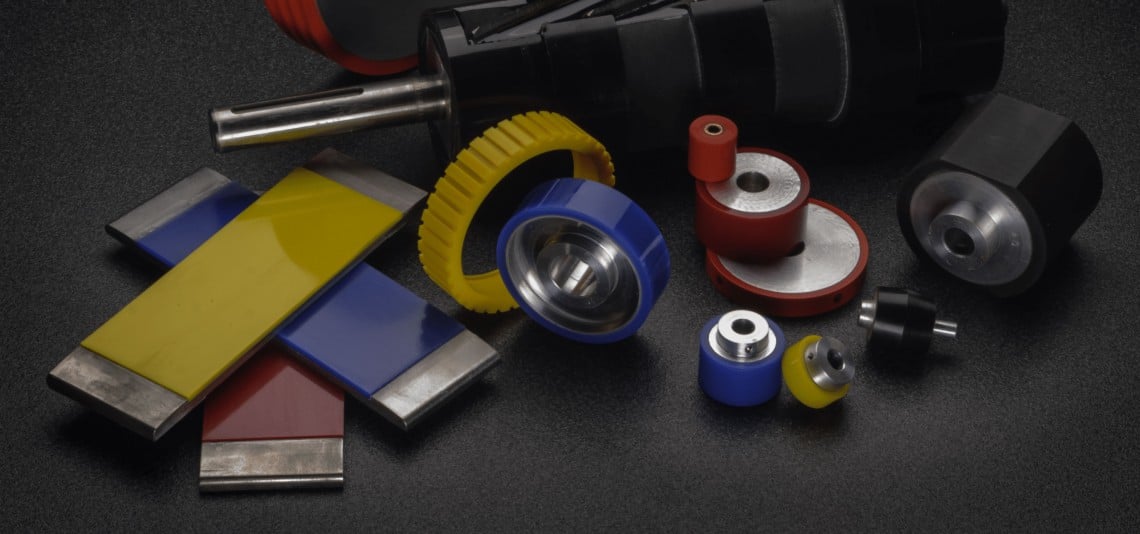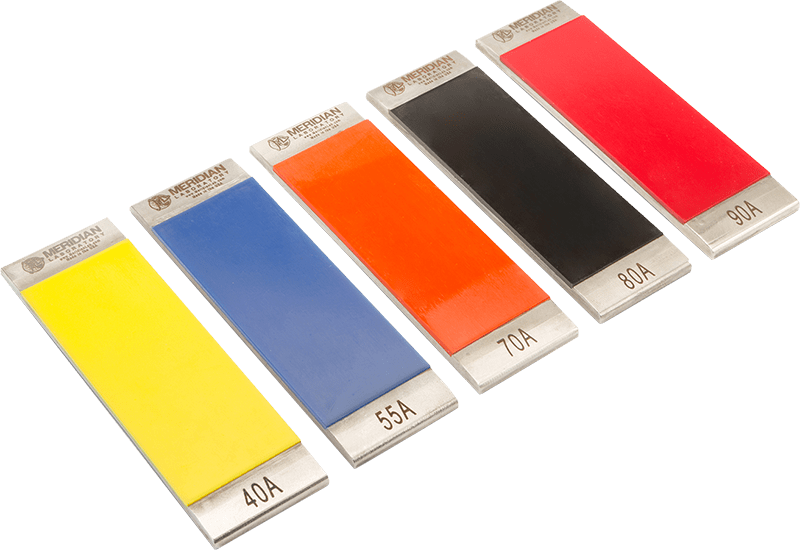ML6® Material Safety Data Sheet

MATERIAL SAFETY DATA SHEET
May be used to comply with OSHA’s Hazard
Communication Standard 29 CFR 1910.1200.
MATERIAL NAME: Cured Polyurethane
Printable copy available for download here
Section 1: Chemical Product
Material Identification: Cured polyurethane
Product Information Telephone Number 1-800-837-6010
Section 2: Composition, Information on Ingredients
Hazardous Components: Specific Chemical %(Wt./Vol.) Other Limits
Identity: Common Names(s) (Optional) CAS Recommended PEL TLVs
None N/A N/A N/A N/A
Polyurethane elastomers are fully reacted polymers forming Articles which are not considered hazardous under osha’s Criteria 29 cfr 1910.1200. However, hazardous dusts, vapors, gases, or fumes may be released by mechanical or thermal processing, or by thermal decomposition.
Section 3: Hazard Identification
Emergency Overview
Acute:
Fumes from hot wire cutting can be irritating and lead to coughing. These fumes could contain traces of tdi, mdi, other isocyanates, and/or curatives. Skin or airborne exposure to isocyanates may produce an asthma-like lung sensitization, with shortness of breath, wheezing or cough, which may occur after re-exposure to very low levels.
Skin contact with some polyurethane products may result in skin sensitization or an asthma-like lung sensitization.
Chronic:
Animal studies indicate that chronic inhalation or overexposure of dusts may cause inflammation of the lungs, fibrosis, and airway destruction.
Severe Immediate Hazards:
Dusts from grinding operations may aggravate existing lung disorders when proper protection is not used.
Potential Health Effects:
Routes of Exposure: x Skin x Inhalation o Ingestion
Lengths of Exposure: o Single x Repeated x Lifetime
Severity of Effect: o Mild o Moderate x Severe
Target Organs: o Liver o Kidney x Lung x Skin o _________
Effects/Symptoms:
See acute and chronic effects in Emergency Overview.
Carcinogenity: Cured polyurethane is not listed as a carcinogen.
Section 4: First Aid Procedures
Procedures: Flush eyes with water if dust from grinding causes irritation.
Note to Physicians (if available): None
Section 5: Fire Fighting Measures
Flammable Properties
Flash Point: Not Applicable
Flammable Limits: LEL: Not Applicable UEL: Not Applicable
Dusts from processing operations may be combustible.
Extinguishing Media: Water, dry chemical, foam, or carbon dioxide.
Fire Fighting Instructions: Evacuate non-emergency personnel to a safe area. Firefighters should use selfcontained breathing apparatus. Avoid breathing smoke, fumes, and decomposition products. Use water spray to quench smoldering elastomers. Product may melt after ignition, to form flammable liquids. Burning produces intense heat, dense smoke, and toxic gases, such as isocyanates, carbon monoxide, oxides of nitrogen, and traces of hydrogen cyanide. Do not breathe smoke. Smoke released, even after fire is out, may contain high concentrations of isocyanates hundreds of feet away. Do not remove self-contained breathing apparatus until smoke is gone and area is completely ventilated with clean air.
Section 6: Accidental Release Measures
Safeguards (Personal): None
Spill Clean Up: Pick up and handle as any other solid material.
Section 7: Handling and Storage
Handling: Cutting elastomer by hot wire or hot branding, or other thermal processing can form decomposition products. Local exhaust ventilation should be used to remove any fumes. If isocyanates or curatives are emitted, ventilation must be sufficient to ensure levels below the TLV for TDI (0.005 PPM TWA/0.02 PPM STEL), MDI (0.005 PPM TWA), other isocyanates, or curatives. Also, see respiratory protection below.
Storage: Store elastomers in areas equipped with sprinkler systems. Store away from sparks, flames, or other ignition sources.
Section 8: Exposure Controls, Personal Protection
Engineering Controls: Local exhaust recommended for thermal processing operations, as required to reduce dust, gas, and vapor fume exposure below OSHA levels.
Personal Protective Equipment
Eye/Face Protection: None required in normal use. For grinding operations, use safety goggles, and face shield.
Skin Protection: None required in normal use.
Respiratory Protection (specify type): Use NIOSH approved respirator. For grinding operations – wear a dust respirator. If generating gas, vapor, and fumes from hot wire, hot knife, or other thermal processing operations – wear an air-purifying respirator with organic cartridge or supplied-air respirator if ventilation is inadequate.
General Protection: None required.
Section 9: Physical and Chemical Properties
Appearance and Odor: Solid, no odor.
Physical State: Solid
PH: N/A
Vapor Pressure: N/A
Vapor Density: N/A
Boiling Point: N/A
Freezing /Melting Point: Melts 380°F – 450°F
May degrade above 300°F (150°C)
Solubility in Water: Insoluble
Specific Gravity: 1.05 – 1.25
Evaporation Rate: N/A
Other: None
Section 10: Stability and Reactivity
x Stable o Unstable
Conditions to Avoid: None
Incompatibility with Other Material: Strong acids or bases.
Hazardous Decomposition or By-products: Decomposition through burning produces fumes consisting of organic particulate, gaseous hydrocarbons, carbon dioxide, carbon monoxide and may contain traces of toluene diisocyanate (TDI) or diphenylmethane diisocyanate (MDI), other isocyanates, curatives, hydrogen cyanide, acrolein and oxides of nitrogen.
Hazardous Polymerization May Occur Hazardous Polymerization Will Not Occur Conditions to Avoid:
o Hazardous Polymerization May Occur
x Hazardous Polymerization Will Not Occur
Conditions to Avoid: None
Section 11: Toxicological Information
Toxicological Data: Under normal conditions not applicable.
Section 12: Ecological Information
Ecological Data: Under normal conditions not applicable.
Section 13: Disposal Considerations
Waste Disposal: Not considered a hazardous material. Dispose of material according to any local, state, and federal regulations.
Section 14: Transport Information
Shipping Information: Not regulated as a hazardous material.
Section 15: Regulatory Information
U.S. Federal Regulations
TSCA
Health & Safety Reporting List: N/A
Chemical Test Rules: N/A
Section 12b: N/A
TSCA Significant New Use Rule: N/A
CERCLA Hazardous Substances and corresponding RQs: N/A
SARA
Section 302 Extremely Hazardous Substances: N/A
SARA Codes: N/A
Section 313: N/A
Clean Air Act: N/A
Clean Water Act: N/A
STATE: N/A
U.S. State Regulations
California Prop 65: N/A
International Regulations
European/International Regulations: N/A
European Labeling in Accordance with EC Directives
Hazard Symbols:
Risk Phrases:
Safety Phrases:
WGK (Water Danger/Protection)
Canada – DSL/NDSL N/A
Canada – WHMIS N/A
Section 16: Other Information
Additional Information:
None
Note: This information is believed to be accurate and represents the information currently available. However, no warranty is expressed or implied with respect to such information, and no liability resulting from its use is assumed. Users should make their own investigations to determine the suitability of the information for their particular purposes. By Theodore J. Hogan & Associates, Inc. June 22, 2005
Safety FAQ
Yes, you can dispose ML6 as you would any non-hazardous / non-recyclable material.
Yes, ML6 is tested for the presence of Lead (Pb), Cadmium (Cd), Mercury (Hg), Hexavalent chromium (Hex-Cr), Polybrominated biphenyls (PBB), and Polybrominated diphenyl ethers (PBDE), of which non-are present.
No, Polyurethane (PUR and PU) is a polymer composed of organic units joined by carbamate (urethane) links and does not contain lead.
Yes, ML6 meets California’s Proposition 65 compliance requirements.
ML6 has exempt status, Meridian Laboratory ships less than 1 ton of material to the EU.
ML6 is not on the Commerce Control List, and does not require an ECCN. ML6 is an EAR99 item and can be exported to most destinations without an export license.
Contact Us
Meridian Laboratory
2415 Pleasant View Rd.
Middleton, WI 53562
Phone (608) 836-7571
T. Free (800) 837-6010
info@meridianlab.com
